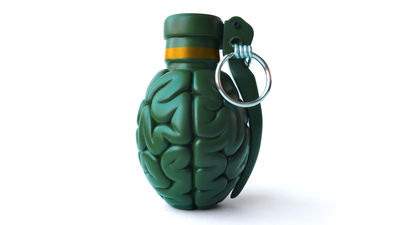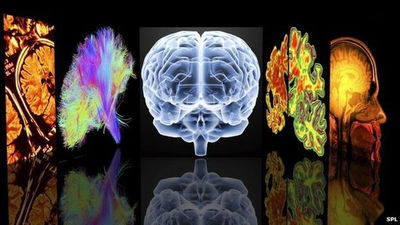New hormone that strengthens bones discovered, mystery of how bones remain strong even when calcium is lost in breastfeeding mothers elucidated

During lactation, a woman's body removes calcium from her bones to produce breast milk. However, how women's bones remain strong despite this has long been a mystery. A research team from the University of California, San Francisco and the University of California, Davis has solved this mystery by discovering a new hormone.
A maternal brain hormone that builds bone | Nature
Scientists Discover a New Hormone that Can Build Strong Bones | UC San Francisco
https://www.ucsf.edu/news/2024/07/428011/scientists-discover-new-hormone-can-build-strong-bones

A research team from the University of California, San Francisco and the University of California, Davis published a research paper in the academic journal Nature on July 10, 2024, and discovered that a hormone called maternal brain hormone 3 ( CCN3 ) increases bone density and bone strength. CCN3 may be useful in treating fractures and osteoporosis. The research team also explained that CCN3 is the reason why the mother's bones remain strong despite the calcium being removed from the bones during breastfeeding.

Osteoporosis is a condition that weakens bones and causes frequent fractures. More than 200 million people worldwide suffer from osteoporosis, and it is known that women are at higher risk of osteoporosis after menopause. The reason why women at risk of osteoporosis increase after menopause is because the concentration of
In a previous study , the research team found that female mice showed a significant increase in bone mass when they blocked the estrogen receptors in certain neurons in a small area of the brain. However, this was not found in male mice. The research team therefore wondered whether hormones in the blood were the cause of promoting bone growth, but they were unable to find this out.
So in the latest study, they thoroughly investigated bone-building hormones, ultimately identifying CCN3 as the mutated female cause. CCN3 doesn't fit the typical profile of hormones secreted by neurons, so the research team was very surprised when they found out that it was CCN3 that strengthened women's bones.
During lactation, CCN3 (red) appears in neurons adjacent to cells called tanycytes (blue) in the female brain.

'When certain neurons did not produce CCN3 during lactation, female mice lost bone rapidly and their fetuses lost weight. This finding supports the hormone's importance in maintaining bone health during lactation, and based on this finding, the research team has dubbed CCN3 the 'maternal brain hormone' (MBH).
The team also increased CCN3 in young male and older female mice, and found that this dramatically increased bone mass and bone mineral density in the mice. In some older female mice that were completely deprived of estrogen, CNN3 more than doubled their bone mass.
'One of the remarkable things about these findings is that we might have missed them entirely if we hadn't studied female mice, which is the standard in biomedical research,' said Dr
'There are some situations where highly mineralized bones aren't necessarily a good thing,' said Dr. Thomas Ambrosi, assistant professor of orthopedic surgery at the University of California, Davis. 'They can weaken the bones and actually make them more likely to break. But when we tested the bones of the mice that were given CCN3, we found that they were much stronger than normal.'
Dr. Ambrosi looked closely at the stem cells in bones that are responsible for generating new bone, and found that when these cells were exposed to CCN3, they became more likely to generate new bone cells.

To test the extent to which CCN3 can help bone healing, the team created a hydrogel patch that was applied directly to the fracture site and slowly released CCN3 over a two-week period. Although the fractures in the older mice did not heal well, the hydrogel patch promoted new bone formation at the site, helping to treat the fracture.
'We have not been able to achieve these mineralization and healing results with other strategies,' said Dr. Ambrosi. 'We are very excited to further this research and potentially apply CCN3 to other problems, such as cartilage regeneration.' The research team plans to continue studying the molecular mechanism of CCN3, changes in CCN3 in lactating women, and the potential of CCN3 to treat various bone diseases.
'Bone loss not only occurs in postmenopausal women, but also commonly occurs in breast cancer survivors who are taking certain hormone-blocking drugs, in young, highly trained, elite female athletes, and in older men who have a lower relative survival rate after hip fracture than women,' said Dr. Ingraham. 'It would be exciting if CCN3 could increase bone mass in all of these scenarios.'
Related Posts:
in Science, Posted by logu_ii







